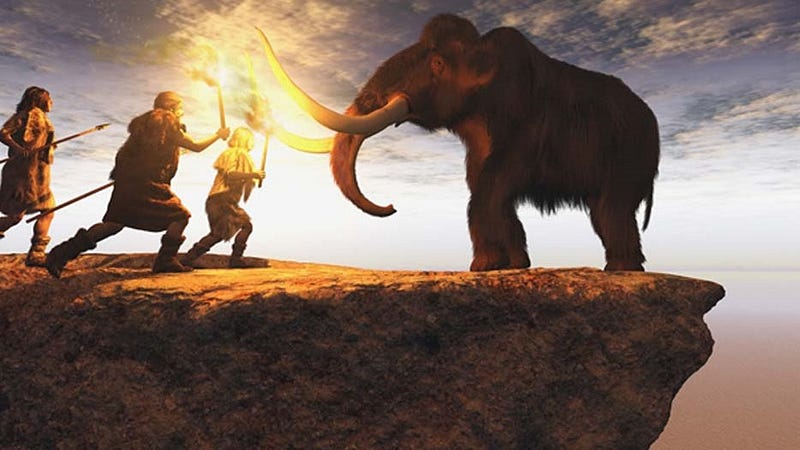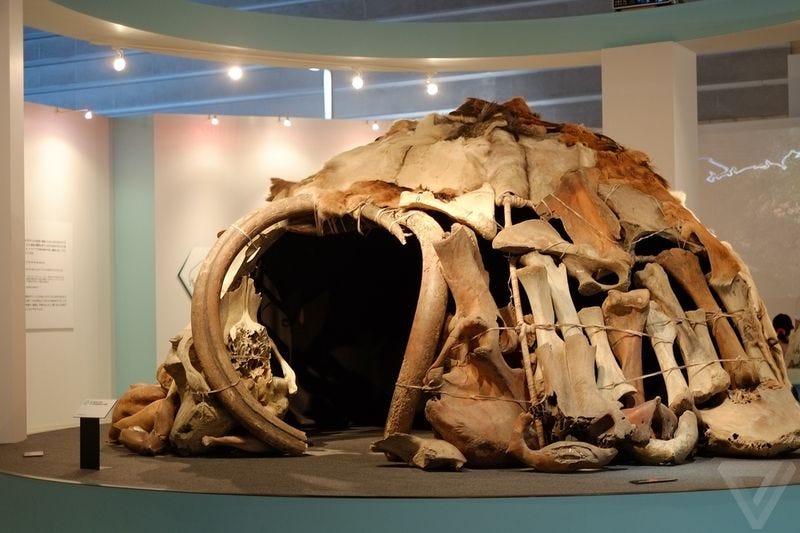# The Fascinating History of Woolly Mammoths and Their Hunters
Written on
Chapter 1: The Last Days of the Woolly Mammoths
Woolly mammoths, towering at three meters and weighing six tons, once roamed the earth. The final group of these magnificent creatures existed on Wrangel Island, located near Alaska, until their extinction approximately 4,000 years ago—long after the construction of the Egyptian pyramids.
Mammoths hold a prominent place in prehistoric art, being the third most frequently portrayed animal in cave paintings, trailing only bison and horses. Historically, there were ten distinct species of mammoths, including a unique pygmy variant, but the woolly mammoth remains the most renowned.

Section 1.1: Size and Adaptations
Woolly mammoths were comparable in size to contemporary African elephants, reaching weights of around six tons and heights of about 3.5 meters. Their impressive tusks could extend up to three meters in length. In contrast, their ancestors, the steppe mammoths, were significantly larger, weighing up to fifteen tons and standing four and a half meters tall.
These mammals were well-adapted to their frigid habitats, sporting long, thick fur coats that shielded them from the cold. They possessed large sebaceous glands that produced oil to waterproof their fur, and their fat-filled humps helped them store essential nutrients for harsh winters.
Adult mammoths faced no natural predators, although calves were at risk from bears and saber-toothed tigers. The woolly mammoth (Mammuthus primigenius) evolved around 400,000 years ago in East Asia, eventually spreading across northern Asia, Europe, and America. By the end of the last Ice Age, about 10,000 years ago, most woolly mammoths had vanished. While they had endured previous climate changes, the last warming event proved catastrophic.
Scientists attribute mammoth extinction to two primary factors: human hunting and the loss of their main food source—nutritious grasses.
Section 1.2: Techniques for Hunting Woolly Mammoths
Our ancestors faced food scarcity, making the successful capture of a mammoth critical for survival. A single mammoth could sustain a small clan of thirty for two weeks or more. To hunt these colossal animals, early humans often targeted calves and females, which were generally easier to capture than males.
Mammoths were relatively easy to track due to their large footprints and habitual routes, which typically included access to water sources. Early hunters employed various strategies for capturing these giants. One notable method involved driving the mammoth toward cliffs or into spike-filled pits.
The mammoth pit, designed to be less than two meters deep with smooth sides, was strategically placed along known paths. Hunters would conceal it with branches and dirt, relying on the weight of the mammoth to prevent escape. However, these intelligent animals quickly learned to avoid such traps.

Another tactic involved encircling the mammoth and using spears made from flint to kill it. Hunters would throw their spears, hoping to pierce the mammoth's thick skin. Some hunters took greater risks, disguising themselves with mammoth dung to ambush the animals or climbing trees to strike from above.
The effort of hunting a mammoth was significant, leading to celebrations of success marked by dancing and singing.
Chapter 2: Utilizing Every Part of the Woolly Mammoth
The video "How did Neanderthals Hunt Woolly Mammoths?" explores the hunting strategies of our ancestors, showcasing their techniques and community efforts.
Hunters used every part of the woolly mammoth, from meat and bones to hides. The meat provided essential calories, amino acids, and minerals, while the fat served as a concentrated energy source. To preserve mammoth meat, cavemen would bury it in snow, salt it, or smoke it. Some historians believe they even placed it in peat bogs, where it could be preserved for up to two years.
Mammoth bones were repurposed as building materials for shelters and tools, while hides were crafted into clothing and containers.

Section 2.1: The Modern Hunt for Mammoth Ivory
Today, the demand for mammoth ivory persists despite the extinction of these majestic creatures. Global warming is causing permafrost in Siberia to melt, triggering a modern-day gold rush as people search for valuable mammoth tusks.
Mammoth ivory can fetch around $2,000 per kilogram, with some tusks weighing as much as fifty kilograms. In some instances, high-quality tusks have sold for as much as one million dollars in China.
Furthermore, the discovery of frozen mammoth tissues has provided scientists with mammoth DNA, sparking efforts to potentially revive these ancient giants. It is conceivable that future generations may witness the return of the woolly mammoth after a 4,000-year absence.
The video "How to Wash a Woolly Mammoth by Michelle Robinson" gives a creative insight into how these magnificent creatures could be cared for in a modern context, highlighting the intersection of history and imagination.